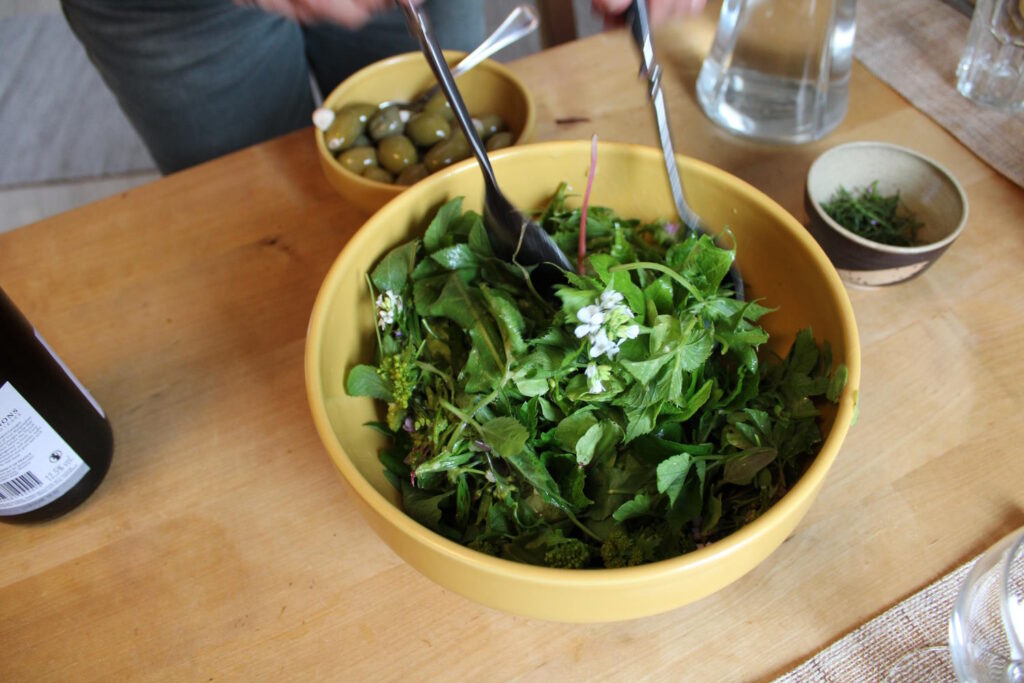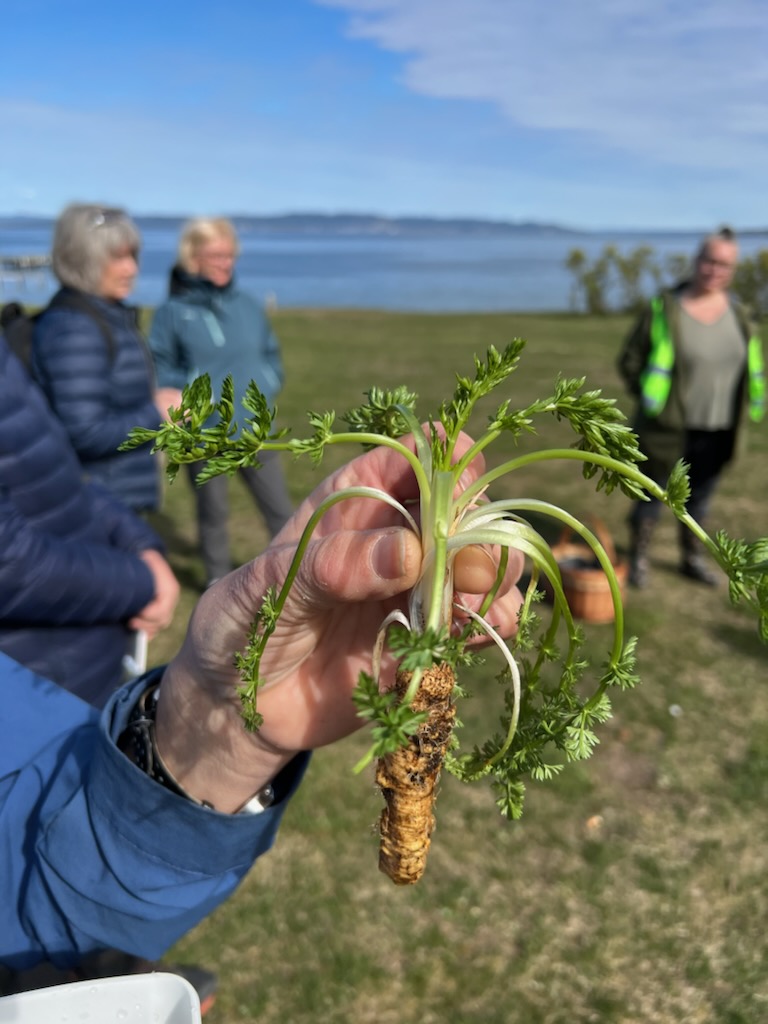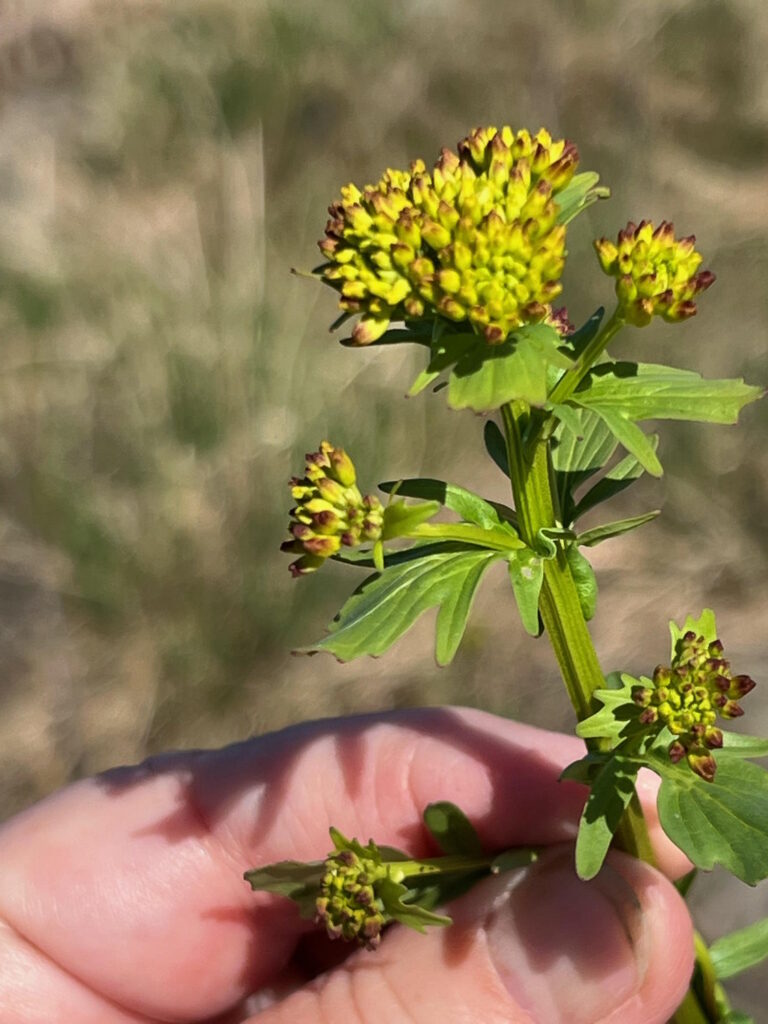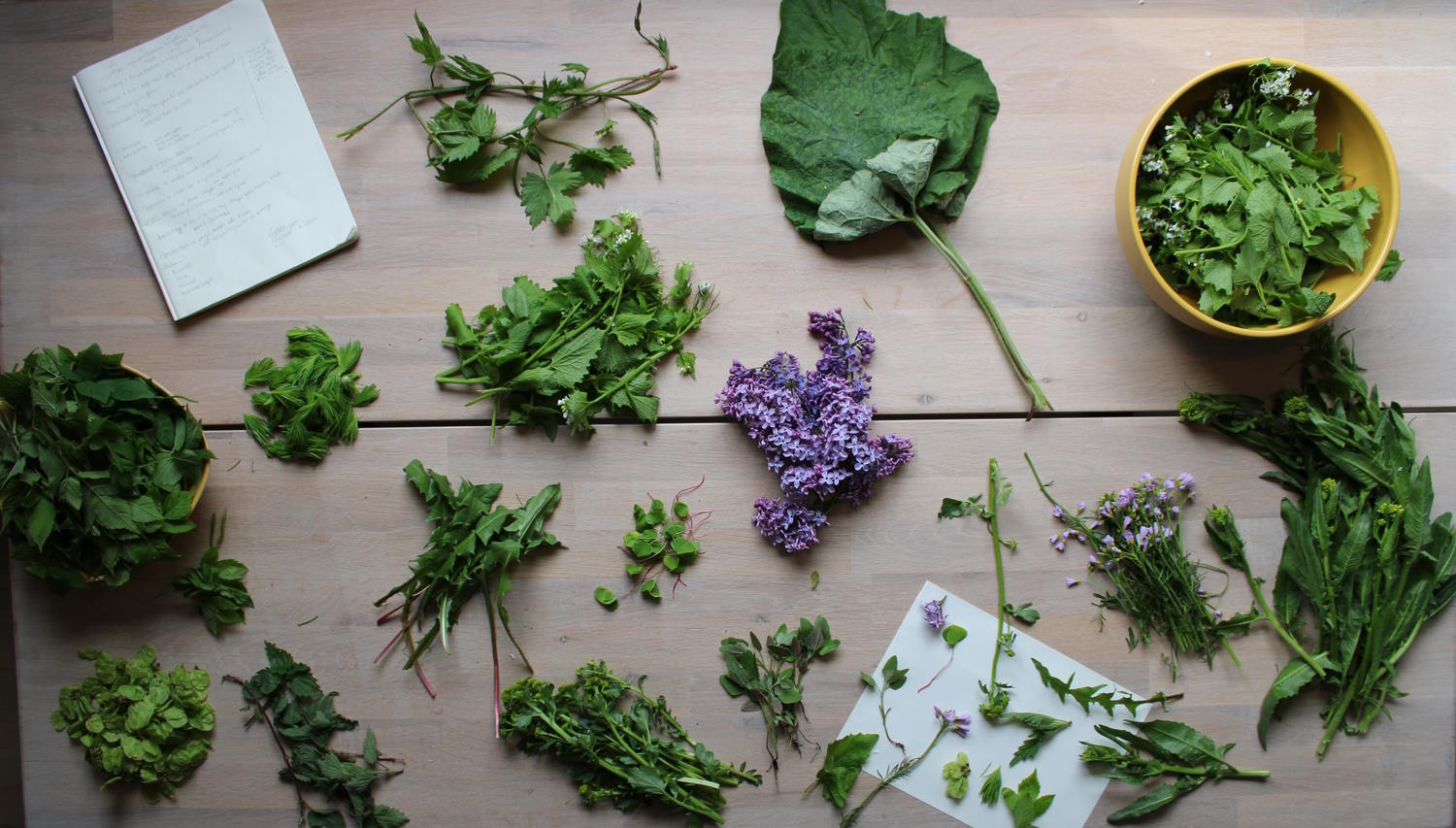by Elaina Weber, PhD candidate, Geography, Norwegian University of Science and Technology (NTNU)
We have split ourselves and the world into hyperseparated realms of nature and culture, and acted as if only the last was genuinely human and truly important. To realise a truly human ecological identity, we must overcome this radical split, knitting together these hyperseparated realms from both directions, both by extending ecology to the human sphere and by extending ethics to the non-human sphere.… Paradox envelops their meeting; in that paradox we must somehow make our home, as beings of both nature and culture whose ethical life should begin with the recognition that ‘all our food is souls.’ (Plumwood, 2000).
Ecological values are alive and rich in indigenous and local cultures. But in her work above, Val Plumwood asks a question about the places where such values are not the dominant ones. In a time of global calls for transition and transformation for sustainable futures, this question reverberates worldwide: How do we build a culture of ecological ethics?
Foragers have a good deal of experience asking ethical questions in nature, and foraging is practised across the globe (Fromentin & Emery et al, 2022). Foragers know that the plants and fungi they pick are alive; they know their stories of birth, growth, reproduction, aging, and dying. They know who eats whom, who becomes food for whom, and their own place in this dance.
In some spheres, plants and mushrooms become lifeless ‘products’ and ‘ecosystem services’, but foragers might wonder: Is it right to take this plant by the root to fuel my own life? Do plants and fungi have souls, and should I eat without killing? Will my body one day be food for these fungi?

These questions are at the heart of a long tradition of discourse that recognizes that humans are not the only beings on this planet worthy of ethical consideration. To different degrees, thinkers in this realm give animacy and agency to non-human animals, sea creatures, plants, fungi, microbes, and the land itself.
The implication is that if the Earth is living, she may have rights. Though this animate worldview is age-old, it has persisted and resisted lately on the fringes of dominant discourses.
However, the ethical consideration of non-humans has recently made its way into high-level environmental governance fora. This is especially true in the case of IPBES, the Intergovernmental Science-Policy Platform on Biodiversity and Ecosystem Services. As a part of an effort to include indigenous and local ways of knowing, IPBES began writing of “living in harmony with Nature” and “Mother Earth” in its key proceedings (Díaz et al, 2015). These terms do not replace their inanimate versions, like “biodiversity” and “ecosystem services,” but the texts do pull animate terms out of the margins and into the center of the page. In doing so, IPBES answers an urgent call in the climate and nature crises: the call to rethink ourselves as nature and nature as neighbor. They contribute to building a culture of ecological ethics in international environmental governance.
I see IPBES’ work as an invitation for others to use animated language in their fields. My day-job is in the geography department, where the term ‘community’ is widely used yet fuzzily defined. Perhaps we geographers can answer this invitation by expanding the term to include more than just humans.
My question, then, becomes: who counts as community, and to what degree?

Who sits at the table? Redrawing community lines
As a scholar, I start with reviewing the literature in my field. The following sketch of ‘more-than-human’ discourses is based on an ongoing review in geography, political ecology, environmental humanities, and community economies. In this short piece, I take the liberty of painting broad strokes across this diverse literature. Throughout, I invite you to see your food as community and yourself as future food.
How do non-humans participate? Expanding non-human agency
The texts give increasing agency to these non-human community members through their framing of what these persons do. As a baseline, these neighbors, our Earth kin, matter; as ethical subjects, they are worth caring for and protecting.
On top of that, these beings have abilities ranging from working to creating knowledges. Some writers threaten to crack open the concept of community altogether. They ask if humans and Earth kin are even separate enough to be individuals, saying that humans are really collaborations within a mesh of fungi, microbiota, plants, animals and ecosystems.
Non-humans matter, and we care for them
First, across the texts, our Earth kin matter. Gibson-Graham and Roelvink (2009) introduce the concept of “econo-sociality” to bring humans and nature together “through a living process of interbeing”. They document active engagements between people and their Earth kin, revealing how close relationships between people and other organisms are integral to a community’s social, cultural, and economic facets. They point out the inherent importance of all organisms to human communities.
Likewise, Barca (2020) introduced a concept inspired by the Extractivistas in Brazil, who are rubber-tappers and wild fruit gatherers. These people live off the forests, but also with them and for them. When their lands were threatened with deforestation, they were willing to fight and even die to protect the forests. Barca focuses on the work humans do to keep Earth alive and healthy, which she calls “earthcare labor”. This care-work for Earth includes social movements for ecological justice, indigenous peoples, peasants and solidarity, as well as gardening and all other ways of caring for living beings.
Both of these texts frame Earth and all its inhabitants as alive and worth caring for, and sometimes the relationships between humans and their living foods are so strong that humans are willing to die for their Earth kin.
Non-humans work and shape human work
It is not just humans who do care work, however: some of the texts show that our Earth kin also work. This literature brings to light the non-human labor. For example, Barron and Hess (2020) work through a concept they call “econo-ecologies”. In this (re)envisioning of community, humans and more-than-human others co-exist through shared labor. Collaborations exist between humans and our Earth kin: cork trees grow their barks continuously even after humans harvest them, forests grow full of mushrooms and berries that humans eat, and lichens and fungi make dyes used for fabrics.
But the concept also names work that happens independently from humans, from which humans still benefit. For example, ants farm certain fungi, which are part of a complex nexus with living trees, which are in turn necessary for healthy fungi that humans can harvest. The same happens on a farm – humans may plant seeds and care for the plants, but the plants themselves have a lot of work to do to grow the vegetables we harvest of them.
These texts reject the idea that humans alone do work, for which our ‘environment’ provides the backdrop and the materials. They focus instead on the shared working projects we have together with Earth kin. These interspecies projects make up a living economy and an ecosystem that can do work: an econo-ecology.
If our Earth kin can do work, they can also shape human work. For example, Brice (2014) argues that in Australian viticulture, the grape vines themselves have agency. They decide in which seasons we work and in which we rest. Through the grapes’ growth cycles, humans must obey weather and annual variation as well as changing seasons and climate. Around harvest time, human workers must attend to their ripeness regularly, and when the grapes are ready, humans must also be. Brice goes so far as to say grapevines are “active participants in patterning social time” of humans. Indeed, sub-cultures are built up around grapes’ rhythms, and our foods (and drinks) become the managers in our community.
Non-humans make livelihoods and knowledges
These non-human persons are also said to build livelihoods, both with and without people. Miller (2019) arguesthat it is time to transcend the sustainability spheres of economy, society, and economy. Instead, he advocates putting habitat-building and maintaining livelihoods at the center of discussion. He calls this ecopoiesis.
Ecopoiesis is made up of alterpoiesis (making others), allopoiesis (being made by others), and autopoiesis (making a living). In other words, every livelihood is composed of providing for others, receiving from others, and making a living for oneself. At the intersection of these three processes, livelihoods are born and habitats are built: for oneself, for others, and by others.
Most notably, these others include non-human beings like garden worms and pollinators as co-creators of livelihoods that we weave. Foragers might recognize that forests and fungi provide for them; foragers could not simply ‘make their own living’ without ecosystems giving their mushrooms. In Miller’s view, life is centered around community; community consists of all sorts of creatures, some of which we eat, and some of which eat us; and we all build livelihoods together.
Further yet, some literature says that Earth kin make knowledges. A research collective in Australia sees the land herself as their ancestor, and thus all knowledge coming from her (Bawaka Country et al. 2016a). This idea comes from the Yolŋu ontology of co-becoming, which sees everything as knowledgeable, and thus sees everyone as teachers (Bawaka Country et al. 2015). It is through relationship with the living land and all its inhabitants that the Yolŋu have built their knowledge systems. As such, all knowledge comes from the land, and the research collective lists Bawake Country as the first author on multiple academic papers (Bawaka Country et al. 2016b).
For those who believe they created the knowledge to dominate their land, crops, and farm animals, the concept of co-becoming would remind them that their knowledge was learned through relationships with these living beings and our Earthy ancestor, whom we are obliged to respect and care for.
Humans are more-than-human
Finally, some literature threatens to crack the idea of community altogether, saying that humans themselves are actually more than human. The popular statistic is often cited that human individuals are actually more bacterial cells than we are human cells in number, by tenfold. The question that follows is therefore: where do humans stop and other creatures begin?
Along similar lines of thought is the literature on multispecies urbanism. This discourse outlines 12 tenets of its practice, and the second of these reads: “Our relational selves and bodies ARE the urban ecosystems, and our urban ecosystems ARE our embodied selves” (Solomon and Nevejan 2019).
This work stretches the understanding of individuals altogether, and thus perhaps begins to mark the boundary of literature that can be used as a base for conceptualizing communities with Earth kin. It says that the molecules of our food have become the building blocks of our bodies, and our bodies constantly break down again into the particles of our living food systems. We are our food, and our food is us.
Outlining the extent to which the literature includes our Earth kin into the concept of communities allows one to stretch their minds to imagine relationships otherwise. The implication of considering non-humans as community members is that they may demand increasingly ethical considerations in our relationships with them.

Being a good neighbor: A culture of ecological ethics
Critics argue that IPBES includes indigenous ways of knowing, but only as an afterthought: they prioritize expert knowledge in defining the very problems at stake, whose knowledges count, and how these knowledges are included (Borie and Pesche, 2017). There is work to be done in breaking and remaking key binaries: nature vs. culture, ecology vs. ethics, the soul-less vs. the soul-full, the eaten vs. the eaters. Yet the very mention of other knowledge systems that see the world as alive, and perhaps its beings as community members, elevates these philosophies to new heights.
Davies (2016) says that just like doulas ease the transition from womb to world, environmentalists can steward the birth of an ethical Anthropocene. We can do so by living ecological ethics in our lines of work, fostering “ecological pluralism and complexity in the face of the simplifying tendencies” (Davies 2016, p. 6).
In geography, perhaps this starts with conceptualizing communities across species boundaries. This is not to suggest that it is necessary, nor perhaps desirable, to throw out anthropocentric concepts in our discipline. The building up of an ecological ethic can exist alongside established discourses, and perhaps the two are strengthened in the paradox that envelops their meeting.
References
Barca, Stefania (2020): Forces of Reproduction. Notes for a Counter-Hegemonic Anthropocene. Cambridge, United Kingdom, New York, NY: Cambridge University Press (Elements in environmental humanities).
Barron, Elizabeth S.; Hess, Jacqueline (2020): Non-human ‘labor’: the work of Earth Others. In J. K. Gibson-Graham, Kelly Dombroski (Eds.): The handbook of diverse economies. Cheltenham UK, Northampton MA: Edward Elgar Publishing, pp. 163–169.
Bawaka Country; Wright, Sarah; Suchet-Pearson, Sandie; Lloyd, Kate; Burarrwanga, Laklak; Ganambarr, Ritjilili et al. (2015): Working with and learning from Country: decentring human author-ity. In Cultural Geographies 22 (2), pp. 269–283. DOI: 10.1177/1474474014539248.
Bawaka Country; Sarah Wright; Sandie Suchet-Pearson; Kate Lloyd; Laklak Burarrwanga; Ritjilili Ganambarr et al. (2016a): Co-becoming Bawaka: Towards a relational understanding of place/space. In Progress in Human Geography 40 (4), pp. 455–475. DOI: 10.1177/0309132515589437.
Bawaka Country; Wright, S; Suchet-Pearson, S; Lloyd, K; Burarrwanga, L; Ganambarr, R et al. (2016b): The politics of ontology and ontological politics. In Dialogues in Human Geography 6 (1), pp. 23–27. DOI: 10.1177/2043820615624053.
Borie & Pesche (2017): Making the IPBES conceptual framework: A Rosetta Stone? In Marie Hrabanski & Denis Pesche
Brice, Jeremy (2014): Attending to grape vines: perceptual practices, planty agencies and multiple temporalities in Australian viticulture. In Social & Cultural Geography 15 (8), pp. 942–965. DOI: 10.1080/14649365.2014.883637.
Davies, Jeremy (2016): The Birth of the Anthropocene. Oakland, California: University of California Press.
Díaz, Sandra; Demissew, Sebsebe; Carabias, Julia; Joly, Carlos; Lonsdale, Mark; Ash, Neville et al. (2015): The IPBES Conceptual Framework — connecting nature and people. In Current Opinion in Environmental Sustainability 14, pp. 1–16. DOI: 10.1016/j.cosust.2014.11.002.
Fromentin, J.‑M., Emery, M. R., Donaldson, J., Danner, M.‑C., Hallosserie, A., Keiling, D., Balachander, G., Barron, E. S., Chaudhary, R. P., Gasalla, M., Halmy, M., Hicks, C., Park, M. S., Parlee, B., Rice, J., Ticktin, T., & Tittensor, D. (2022): Summary for policymakers of the thematic assessment of the sustainable use of wild species of the Intergovernmental Science-Policy Platform on Biodiversity and Ecosystem Services (IPBES).
Gibson-Graham, J. K.; Roelvink, Gerda (2009): An Economic Ethics for the Anthropocene. In Antipode 41, pp. 320–346. DOI: 10.1111/j.1467-8330.2009.00728.x.
Miller, Ethan (2019): Reimagining Livelihoods: Life Beyond Economy, Society, and Environment: University of Minnesota Press.
Plumwood (2000): Being Prey. In O’Reilly, James; O’Reilly, Sean; Sterling, Richard (eds.). The Ultimate Journey: Inspiring Stories of Living and Dying. San Francisco: Travelers’ Tales.
Solomon, Debra; Nevejan, Caroline (2019): Soil in the city: The socio-environmental substrate. In Alexandra Toland, Jay S. Noller, Gerd Wessolek (Eds.): Field to Palette. Dialogues on soil and art in the Anthropocene. Boca Raton: CRC Press Taylor & Francis Group.
